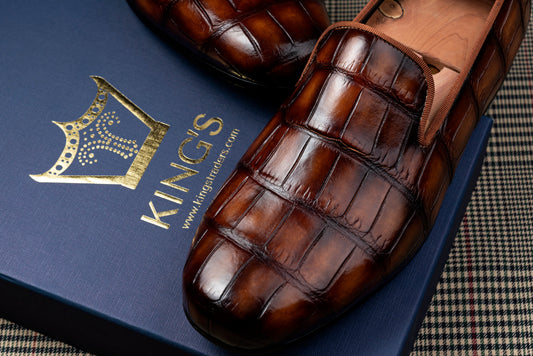Modern footwear with Ethnic Menswear

Share
I want to start by wishing everyone a Merry Christmas.
I have observed more and more people are now wearing traditional and ethnic wear for occasions like wedding and festivals. Be it an Indian, an African, an Indonesian or any culture where traditions play an essential part in the lifestyle; footwear has evolved from leather Kholapuri chappals (traditional Indian Slippers) or Afro Sandals to more formal shoes.

The Indian men would typically dress up in Kurtas, Sherwanis, and Jodhpuris on special and traditional events. Indonesian take pride in wearing their Batek outfits of special occasions. The African Dashiki outfits are stunning and diverse. They are bright, colorful and revered with unique designs. And many more traditions and cultures all over the world are evolving in the way they carry their outfits. The most important and critical part is the footwear which has changed over the years.
From open sandals and slippers which appears more casual; men have now opted to look more formal with closed footwear.
Penny loafers, Belgian Loafers, and Tassel Loafers are amongst the preferred choices in footwear. These provide diversity and a casual yet more relaxed look holistically.

Then we also have some men who venture into wearing Monk-Strap shoes which also lets the person stand out from the crowd with a more elegant taste in footwear. I have seen men wearing double and triple monk straps to rock the events and push the boundaries of sophistication. The most important aspect is that it goes well with the outfit and does not appear out of place.

Then some men opt for sneakers with traditional wear. These can work and not work depending on how they pair the sneaker color and sole-color combination. There is no right or wrong here, but just creative and bold choices with confidence to carry the footwear with the outfit. I am placing some images which will give a good idea of what I am referring to and how shoes are changing the way menswear is evolving.

PS: All images are from the internet, courtesy Raghavendra Rathore from www.rathore.com



